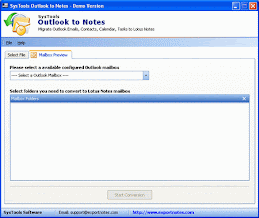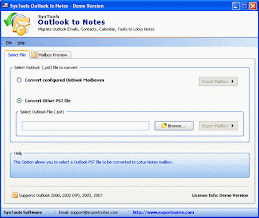Microsoft Outlook and Lotus Notes email applications have so much in common yet the two are so different from each other in various aspects, which builds different choices in users. Some users like Outlook better than Lotus Notes and some prefer Notes over Outlook.
Switching From Microsoft Outlook to Lotus Notes
You might have been using Microsoft Outlook email client and due to some advantages of using Lotus Notes, you might be feeling the need to switch from Outlook to Notes. This switch will necessitate you to convert Outlook emails to Notes and transfer all other Outlook email data stored in PST files to Lotus Notes NSF format as this PST to NSF migration will help you keep accessing old Outlook email data even after switching to Lotus Notes. Third-party tools are available for this PST to NSF conversion.
A Product to Convert PST to NSF Quickly
SysTools Outlook to Notes software is a reliable product to convert PST to NSF. Using this software, you can speedily convert Outlook to Notes. The software uses rapid conversion techniques and advanced algorithms to quickly convert Outlook to Lotus Notes. Using this Outlook to Notes software, you can transfer the entire Outlook mailbox from PST to NSF.
3 Quick Steps of PST to NSF Conversion
Following are the 3 quick steps to convert Microsoft Outlook email items stored in PST files to Lotus Notes NSF format using SysTools Outlook to Notes software:
- Purchase "SysTools Outlook to Notes" software.
- Run the software. In the initial screen, click the "Browse" button to select the PST file that you want to convert to NSF and then click the "OK" button.
- Select a saving location for saving the NSF file converted from your PST file. Click the "Export" button for the conversion.







